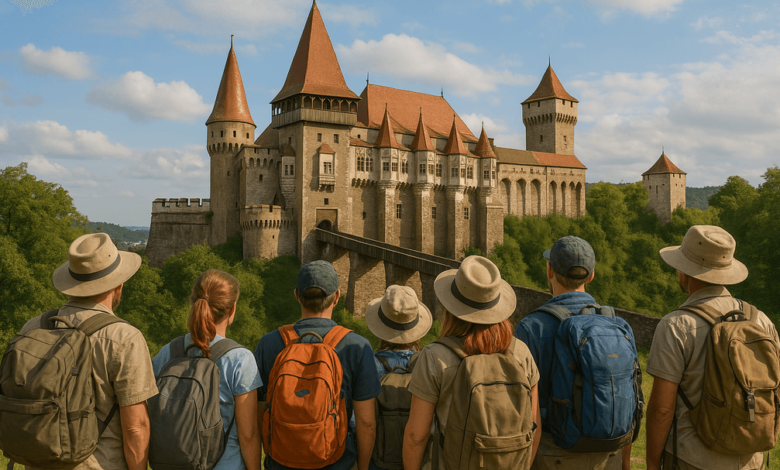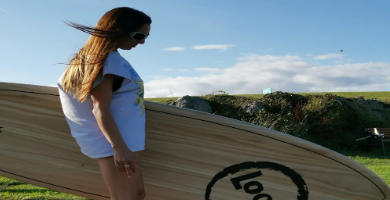Kingdom Come: Deliverance 2 Release Sparks Tourist Boom in Czech Republic

If you’re interested in a business like tourism, place a bet and read about how video games influence the tourism industry in some countries.
Video games and movies today have a strong influence on where people want to travel.
It has become a real trend — to see with your own eyes the places shown on screen. The tourism industry is actively taking advantage of this opportunity. For example, after the release of the Game of Thrones series, thousands of tourists started traveling to Croatia, where scenes of King’s Landing were filmed. The city of Dubrovnik became one of the most popular destinations. People want to walk the same streets as the characters, take photos, and feel the atmosphere. The same goes for games. After the release of The Witcher 3, fans traveled to Poland — the country that inspired the developers to create the game’s world. There were even special tours organized to locations connected with the Witcher. Another example is Japan. Thanks to anime, games like Ghost of Tsushima, and movies, interest in Japan has grown significantly in recent years. Tourists want to see cherry blossoms, ancient temples, and try the same noodles they saw in anime.
This type of tourism is even called “fan tourism” or “screen tourism.” People are willing to fly to another country just to visit that exact castle or forest. In the end, it brings profit to restaurants, hotels, and shops. Local authorities even create museums, organize tours, and hold festivals based on popular projects. So, games and movies not only entertain but also truly help develop the economy through tourism. It’s a great example of how culture and business can work together. The recent release of Kingdom Come: Deliverance 2 wasn’t just a big deal in the gaming world — it also unexpectedly boosted tourism in the Czech Republic. People from all over the world started booking trips to Prague, visiting medieval castles, and looking for villages that looked like the ones they saw in the game. That’s because the game shows medieval Bohemia in such a realistic way, players wanted to see it for themselves.
Even More Realistic Than the First Game
The first Kingdom Come: Deliverance came out in 2018 and got great reviews for its realistic graphics, historical accuracy, and deep story. But the second game took things even further. The developers at Warhorse Studios paid attention to every detail — from village buildings to character costumes. Everything you see in the game is based on real places in the Czech Republic, just how they might have looked in the 15th century.
Players are walking through real locations: the town of Sázava, Rataje Castle, monasteries, forests — all of them exist in real life! As soon as the game came out, people started looking for these places on the map. And then they began traveling, booking tours, taking photos “like in the game,” and even doing cosplay photo shoots at real castles.
Czech Towns Come to Life
Tourist agencies in the Czech Republic were surprised by the sudden increase in visitors. Many said they didn’t understand at first why small historic towns — which usually get only a few tourist groups a week — were suddenly full of hundreds of people. Most of the visitors were young people from Germany, Poland, the US, and even Japan.
“We started getting lots of questions like ‘Where was Kingdom Come 2 filmed?’ or ‘Where can I find Kingdom Come locations in real life?’” said a tour guide from Kutná Hora. “At first we thought a famous blogger had come here, but then we realized — it’s all because of the game.” The town of Sázava even created a special tourist route based on locations from the game. Signs near landmarks now say not only what the place is (like a 13th-century monastery) but also which part of the game it appears in.
Growing Interest in History
Another interesting result: people are getting more into history. Players are now reading about the Hussite Wars, Czech kings, and medieval life and culture. Many say the game inspired them to learn what was really happening in Europe during the 1400s — a time without smartphones or electricity, but full of knights, plagues, and religious conflicts. Czech museums have also noticed more visitors. At the Sázava Monastery, staff say young people who never used to care about museums are now buying tickets, asking how monks lived, what they ate, how they prayed, and if they can take photos wearing a monk’s robe.
A Boost for the Economy
This wave of interest is a big win for the Czech Republic. Local businesses didn’t miss their chance. Cafés and restaurants started offering “medieval” dishes inspired by the game. Souvenir shops began selling swords, maps, and character figurines. Even breweries created special beers with names like Henry’s Ale or Sázava Stout. City officials also acted fast: some towns now host 15th-century-style festivals with street musicians, sword-fighting shows, and craft workshops. These events are not just for fun — they help keep the “Kingdom Come effect” going.
More Than Just a Game
Kingdom Come: Deliverance 2 is no longer just a video game. It’s a cultural phenomenon that shows how a virtual world can inspire real-life actions. Who would have thought that gamers sitting at home would later travel to old villages, learn about history, and visit museums? Games are no longer just entertainment. They can affect culture, tourism, and even the economy. The Czech Republic is a perfect example of how the digital world can draw attention to real places. And for Warhorse Studios, it’s a huge success — they didn’t just make a great game, they sparked interest in an entire era.



